When New Movies Were Scarce, We Turned to the Classics
With the announcement of the Golden Globes nominations this week, the 2020 awards season is in full swing—finally! But if you’re anything like me, you still have many films to squeeze in before making your Best of 2020 list. That’s because 1) every studio is saving their big contender for the last two weeks of February, and 2) you spent the last 10 months watching the films of yesteryear.
Many of us have been looking for ways to fill the extra time at home, and streaming services have made it easier than ever to fill it with movies. Our team discovered we were using it to catch up on titles we hadn’t prioritized before, and these are the ones that lived up to the hype—we think you’ll want to make time for them, too.
Mr. Thank You
DIRECTED BY HIROSHI SHIMIZU/1936
By Jeffrey Knight
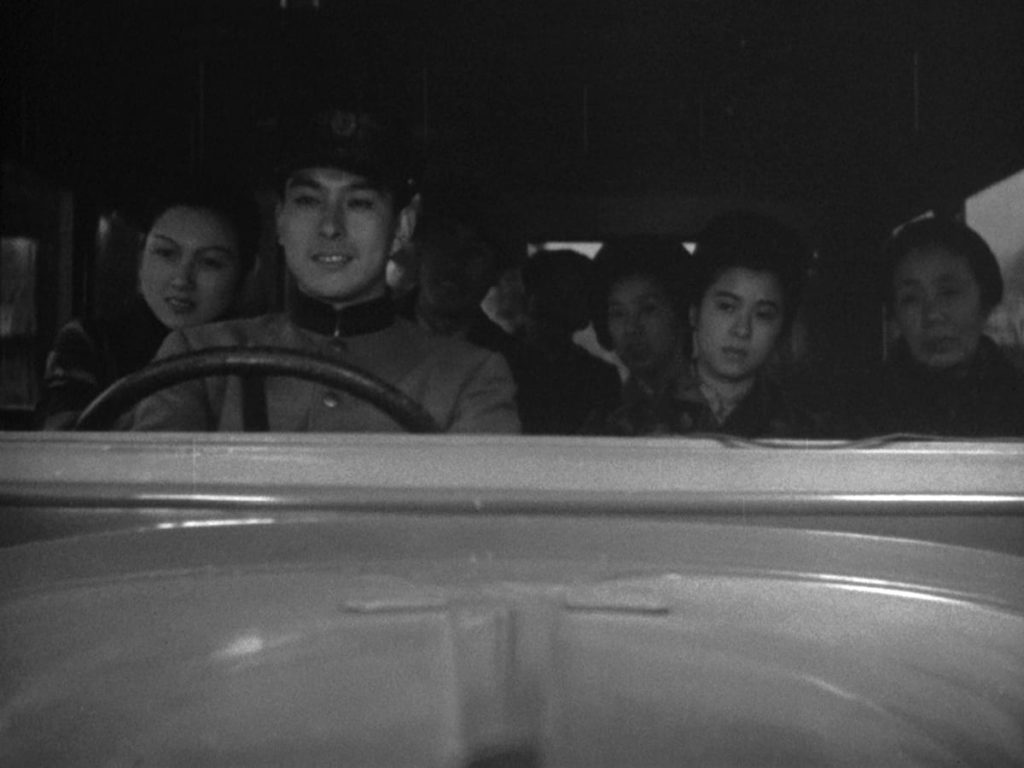
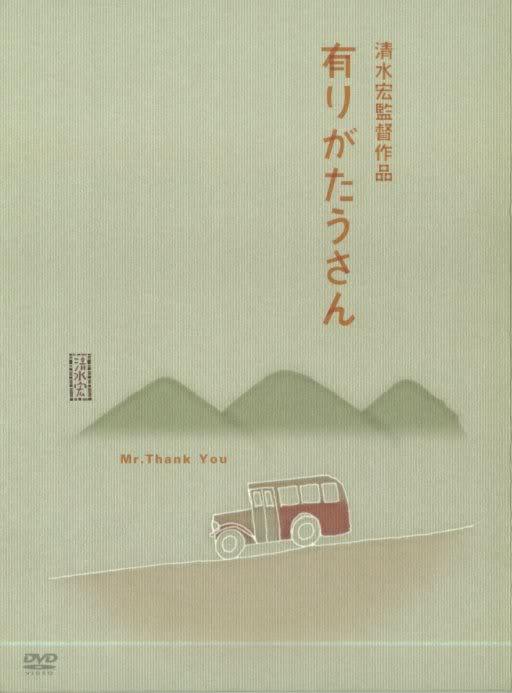
On the road which passes between a little Japanese village and the nearest train station, and which crosses over two mountain passes, the bus driver known as ‘Mr. Thank You’ is a local celebrity. He got his nickname for his expressions of gratitude whenever local traffic (mostly pedestrians and animal-drawn carts; even a flock of chickens) pull over to the side of the narrow track to allow his bus to pass. He is unfailingly polite and considerate to the folks who inhabit the towns he drives through, and so he has achieved some measure of fame.
The movie named after our bus driver tells the story of one such journey, based on a short story by Yasunari Kawabata. It doesn’t have a lot of plot to speak of. We meet some of the passengers as they wait for the bus’s departure. There’s the grouchy businessman who’s in a hurry, and the young woman, who’s gotten around and seen some things. Then there is the young girl and her mother. Times are tough for everyone all over Japan, and even though the crop harvest was good, prices are too low to support a family. What’s more, jobs are scarce—to the point where it is suggested that one should offer condolences to a family on the occasion of a pregnancy instead of congratulations. The young girl is travelling to the train station, from whence she will travel to Tokyo and be sold as a prostitute. She is, of course, ashamed that this is what she is reduced to, but there is no choice. There are no marriage prospects, and her family cannot afford to keep her.
This is fairly heady material for a movie who’s chief antagonist is a private car that keeps passing Mr. Thank You’s bus without saying “thank you,” but it’s par for the course for director Hiroshi Shimizu. A contemporary of, and close friend to, Yasujiro Ozu, Shimizu got his start directing during the 1920s, and had an incredibly prolific career, directing around 160 films. Mr. Thank You was one of his earliest films with sound (in Japan, transition to talkies took place over a much longer period than it did in America). Like many of Shimizu’s other works, Mr. Thank You focuses its lens on characters who exist on the margins of society. (Not just the passengers—we get stories for some of the people Mr. Thank You passes as well, such as the man who wanders, heartbroken, after the love of his life was sold away.) Even the impatient businessman, often an object of ridicule by the other passengers, gets some empathy when we learn a little of his story.
Mr. Thank You could double as a documentary on rural life in Japan during the ’30s. A good deal of its (short, only-76 minute) runtime consists of just pointing the camera out of the bus’s windows and letting it record the countryside rolling by and the people who inhabit this landscape. This emphasis on real locations and non-actors are another important facet of Shimizu’s work during the ’30s, a proto-‘neo-realism’ as it were. There’s an elegiac undercurrent to the movie, as the bus wends its way from the countryside toward the city. “Many girls who make this journey,” one character warns another, “never come back.”
The young girl is heartened by the thought that if she ever does make it back to her village, she will be coming back on Mr. Thank You’s bus. Given that I first watched this movie in early 2020, just as the full scope of the COVID pandemic was starting to become clear in America, I found its gentle humor, empathetic eye, celebration of kindness, and its hope that not everything need be terrible forever reassuring. Rewatching it to refresh my memory of it for this piece reaffirmed all those feelings, and it was a pleasure to take a trip with Mr. Thank You once again.
The Bellboy
DIRECTED BY JERRY LEWIS/1960
By Jim Tudor
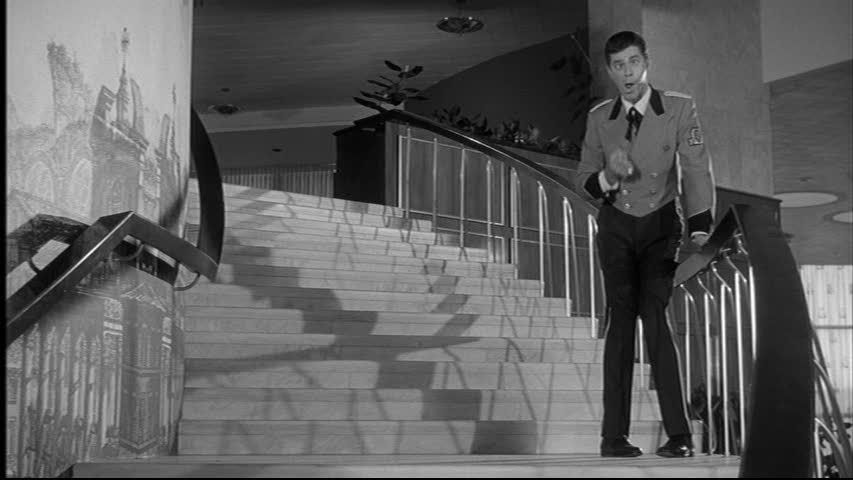
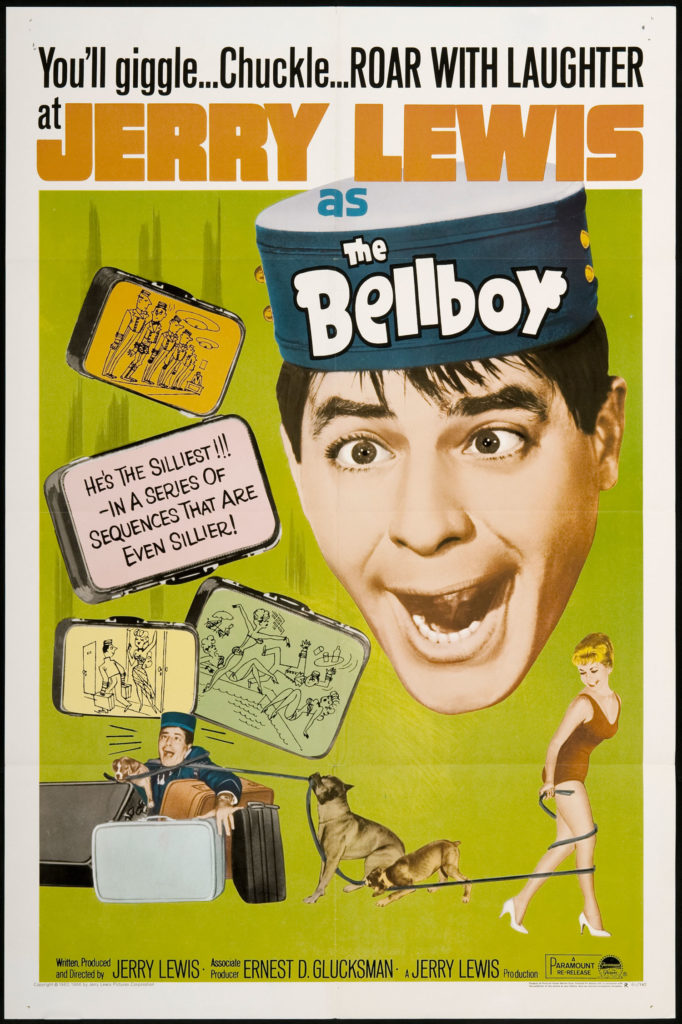
In my increasingly overwhelming preparation to teach an eight-week university course on film comedy, I realized a formidable blind spot: Jerry Lewis movies. It’s not that I’d never seen any; it’s just that I haven’t seen any since I was in the second grade. Back then, Lewis’s films were shown regularly on local television. (Well-worn pan-and-scan prints with commercial breaks—take it or leave it in those pre-cable, pre-VCR days). I made a point of watching as many as I could, as this spastic, unpredictable man-child was nothing if not fascinating. Is it possible to grow up but not really grow up? It helped that Lewis physically resembled my uncle, who I also thought of as a fun clown.
These days, I can’t begin to recall any details of which Lewis films I took in back then. Only one, Frank Tashlin’s mortifying Cinderfella, stuck with me. Even as an undiscerning eight-year-old, I did not like that movie. As part of my current Jerry Lewis binge, I watched it again. It’s worse than I remember. In my kid brain, that experience might well have rendered Lewis movies as no longer be essential viewing. Also, as I got older, I began to observe that my uncle could be something of an angry person. So was Lewis, I came to find out. I made a point of catching as much of Lewis’s annual MS Telethon as I could each year- it felt like an important event. But where was Jerry? When he did rarely appear on camera, I remember that he was dead serious (i.e., boring), lecturing about the disease which we were already well aware of. Maybe I should go outside and play with my friends…
Cut to the present. I checked out some vintage Lewis films from the library. First up, 1960’s The Bellboy. I didn’t bother to research that this is Lewis’s own directorial debut. Already a very bankable solo movie star in the wake of his split-up with legendary performing partner Dean Martin, this was Lewis pushing his career in more ways than one. The Bellboy, I quickly realized, predates the Zucker-Abrams-Zucker comedies such as Airplane! as being a purely plotless presentation of nonsensical gags. That right there was something of a realization. Heck, even Airplane! technically has a plot. Not The Bellboy! It announces it itself as such upfront.
The whole of The Bellboy takes place in and around a posh Miami hotel. According to Lewis, it was shot in twenty-eight straight days with no breaks. The director is also the star, a mute bellboy with a reputation for lousing things up Amelia Bedelia-style. “Trickfilm” shenanigans play into the comedy, signaling Lewis to be creatively interested in more than just spotlighting himself as a popular monkey-man. A sudden jump cut from daytime to night solves one problem; a momentary cutaway solves another: the bellboy sets up thousands of chairs in an empty ballroom in no time at all, easy-peasy. Early on, the film spends one of its best bits: celebrity Jerry Lewis arrives for a stay, entourage and paparazzi in tow. With the zany doppelgänger bellboy on the job at the same time, what could possibly go wrong?
The Bellboy, in airy black and white and refreshingly brief (apparently it was a struggle to get the film to its 72-minute running time), is a delight. It also, though, turns out not to be indicative of other Lewis solo features. (At least not the ones I’ve caught up with thus far). For the duration of his remaining time as a box office superstar, Lewis would continue to work with other filmmakers, but also push his own continuing filmmaking efforts in new directions. 1961’s The Ladies Man, for example, sees his fascination with vast containment pushed in a very ornately-constructed Grand Budapest Hotel kind of direction. But for a most enjoyable look at the dawning of Jerry Lewis’s legitimate multi-pronged moviemaking chops, The Bellboy is a great place to ding in.
Bonnie and Clyde
DIRECTED BY ARTHUR PENN/1967
By Taylor Blake
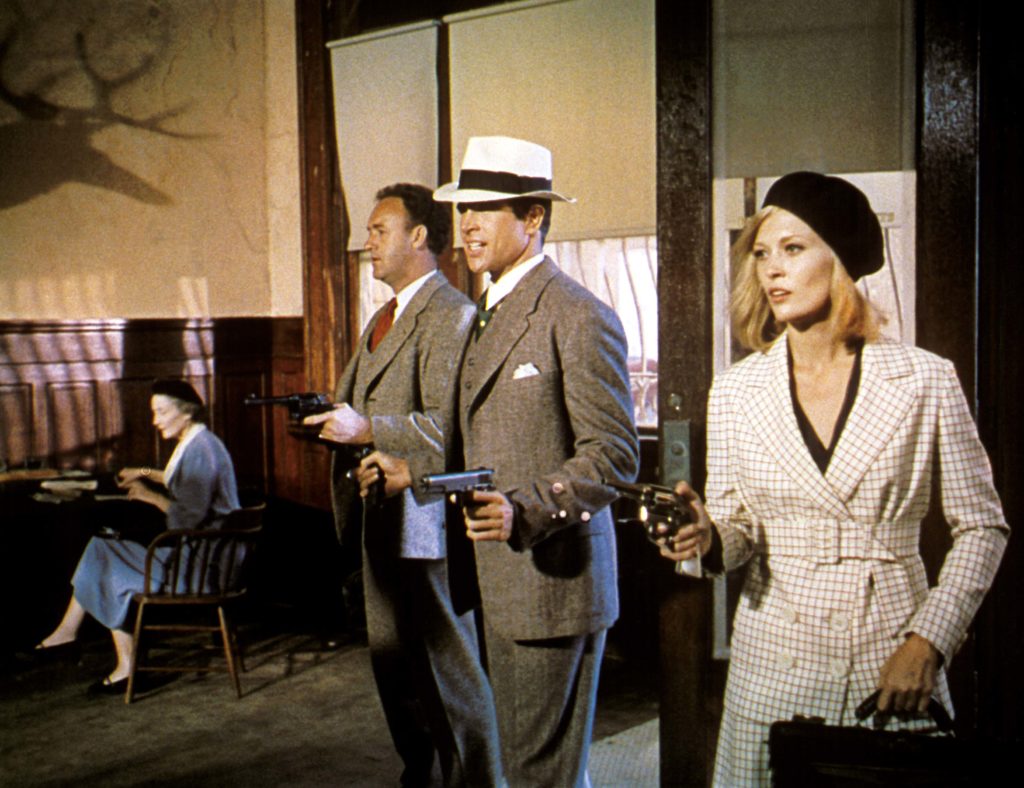
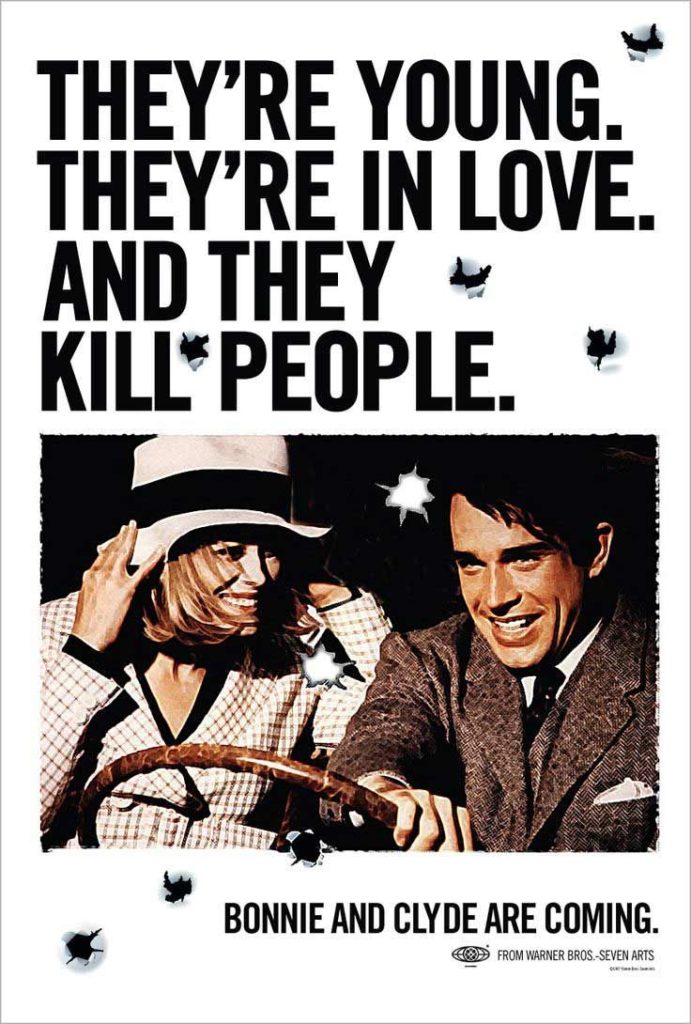
My mantra in 2020 was focus on what you can control, and about all I could control in 2020 was my movie watching.
And so my year became a year of making lists, setting DVR recordings, scouring my local library, keeping tabs on the comings and goings on streaming services, and strategizing how to use my free trials. After my 9 to 5 each day, I am still transforming my home office—also my living room—into my home theatre, dedicating myself to crossing hundreds of titles off my list, some of which I’m embarrassed it took this long to get to. 2001: A Space Odyssey, All the President’s Men, Butch Cassidy and the Sundance Kid, Double Indemnity, Psycho, The Searchers, Saving Private Ryan, The Sting—and that’s just a few! (Just don’t ask me what’s still on that list.) But of the hundreds of new-to-me movies I watched in 2020, only one kept me up way past my bedtime reading reviews from Roger Ebert and Pauline Kael, and that would be Bonnie and Clyde.
Some of that was purely because of the aesthetics: Hobo chic Faye Dunaway! The comical old-timey music! The golden-hued cinematography! It felt modern, timeless, and so ‘60s all at once. Arthur Penn’s film uses the aesthetic to romanticize the infamous felons—in spite of all their fumbled robberies, you aren’t just fond of them, you want to be them. Kael identified this as part of the ‘60s nostalgia for the Great Depression, a phenomenon both new and confusing to me (seems less logical than the ‘70s nostalgia for the ‘50s, no?), but if that nuance of the twee introductions to the Barrow Gang is lost on modern audiences, the brutality of the violence is not. We’ve been watching Quentin Tarantino movies for almost two decades now, so while bullets and death may not shock anymore, they still sting in this film. I rewatched the surprising ending because I couldn’t process all of the heartbreak flying through that lightning fast editing in the final moments.
Bonnie and Clyde isn’t style without substance. The character work and narrative tension have aged marvelously, and the cast is embarrassingly stacked. Only performers as magnetic as Dunaway can say, “We rob banks,” and make it an AFI top 100 quote. It turns out Gene Hackman has always been great, and now I finally am beginning to understand the appeal of Warren Beatty. (Between Ishtar and the biggest blunder in Oscars history, he’s had a tough time in my limited exposure to him.) I haven’t even mentioned Estelle Parsons, the actress who actually won an Oscar for her role! This classic lives up to the hype, and I highly recommend you move it to the top of your list if you still haven’t seen it—just make sure you start it earlier in the day so you have plenty of time for all the articles and criticism you’ll want to read afterward.
Treasure Island
DIRECTED BY OSAMU DEZAKI/1987
by Ethan Halker
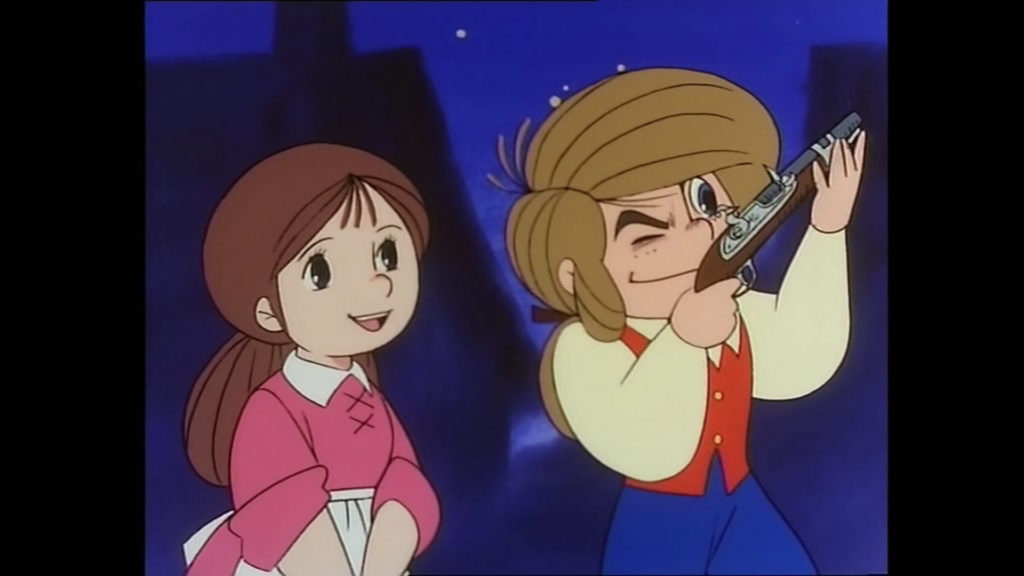
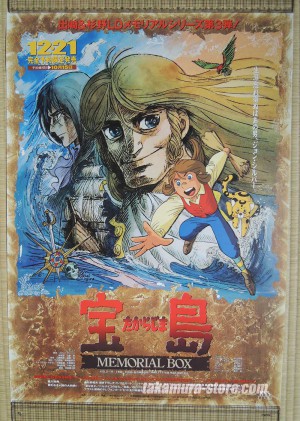
As a self-professed fan/obsessive of Osamu Dezaki’s, Treasure Island was a rather embarrassing omission, along with much of Dezaki’s 70s catalog. Last year, while trapped at home and lacking any suitable excuse, I was finally able to – mostly – rectify this sizable blind spot, starting with this film.
Treasure Island (Takarajima) is a 1987 compilation film, compressing Dezaki’s landmark 1978 television adaptation of Robert Louis Stevenson’s classic novel. While truncated considerably, the Treasure Island is still a fun, swashbuckling adventure and an absolute feast for the eyes.
For those who may be unfamiliar with one of the countless adaptations of Stevenson’s novel, Treasure Island tells the story of Jim Hawkins, an energetic young boy fascinated by the prospects of adventuring on the high seas. Soon enough adventure finds Jim, as the he comes into possession of a map to the eponymous Treasure Island, where it is said the lost treasure of the pirate Captain Flint is buried. Joining the crew of the Hispaniola, Jim embarks on a voyage to the island, befriending and growing to admire the ship’s cook, Long John Silver. When the crew finally arrives at Treasure Island they find their troubles have only just begun, as a pirate mutiny led by Silver sparks a race to uncover the location of Flint’s treasure.
While in many ways true to the spirit of Stevenson’s original work, Treasure Island is never afraid to make diversions. The fairly unobtrusive if silly inclusion of a pet leopard cub for Jim, an encounter with a ghost ship, and a new epilogue stand out quite prominently, but the most significant change is with the character of Long John Silver. Silver is depicted as a complex man, strong and physically imposing despite the use of a crutch, charismatic and possessing a sincere affection for Jim, but at the same time self-destructive and impulsive. Even in the truncated version Silver shines, the swashbuckling adventure material dramatically enhanced by the interpersonal conflict between Jim and Silver, with the audience often sharing Jim’s complex feelings towards the pirate leader.
Treasure Island’s presentation remains remarkable, its origins as a television series recognizable only from its slightly rushed pacing rather than its visuals and score. Character designs are provided by Akio Sugino – a lifelong collaborator of Dezaki’s, together called the “Golden Combo” – and are typically striking and expressive, with stand-outs being the aforementioned broad-shouldered, square jawed Long John Silver and the rounded, cute design for Jim Hawkins. The designs are animated adeptly, with generally fluid movement and good posing that very rarely feels stiff.
However, it is likely Dezaki who contributes most to Treasure Island’s style, and why it so smoothly makes the transition from television series to feature film. Dezaki famously did much of his own storyboarding, imbuing his work with a sense of cinematic composition. A shot is framed through the eyeholes of a skull, the frame shatters as glass is cracked, and foreground elements intrude on the frame, giving a sense of depth. Practical lighting effects add texture to the image, too, as directional shadows are cast in night scenes and lens flares add to the beating of the sun overhead. Most notable of all is the use of Postcard Memories, frames where the animation transitions into from a typical cel of animation to a more detailed, painterly rendition of the same image; it’s the first time Dezaki would properly implement the technique, and it would later become his calling card. All these elements contribute to a distinct visual style in a way that obfuscates the film’s television origins, and remains impressive to this day. Treasure Island remains, well, a treasure, the best adaptation of Stevenson’s classic novel not featuring Muppets. A thrilling pirate story and visual wonder from one of the great directors of anime, I can’t recommend Treasure Island enough.

